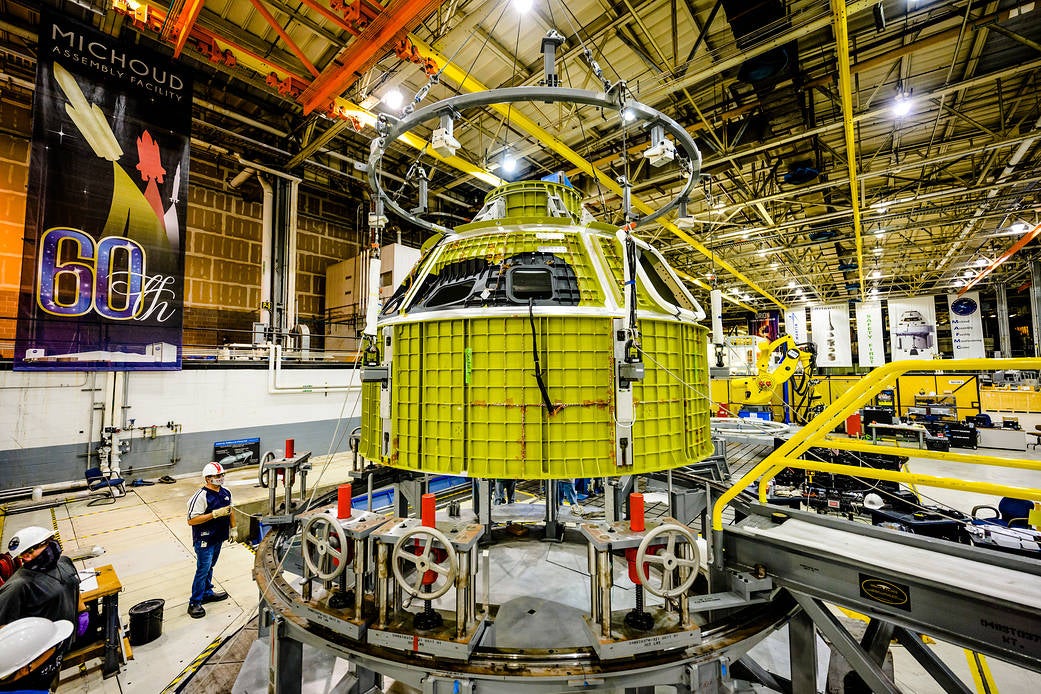NASA bumps back next lunar landing. What’s behind space agency’s delay?
Space agency now says boots on moon won’t happen until 2025 ‘at the earliest’

Your support helps us to tell the story
From reproductive rights to climate change to Big Tech, The Independent is on the ground when the story is developing. Whether it's investigating the financials of Elon Musk's pro-Trump PAC or producing our latest documentary, 'The A Word', which shines a light on the American women fighting for reproductive rights, we know how important it is to parse out the facts from the messaging.
At such a critical moment in US history, we need reporters on the ground. Your donation allows us to keep sending journalists to speak to both sides of the story.
The Independent is trusted by Americans across the entire political spectrum. And unlike many other quality news outlets, we choose not to lock Americans out of our reporting and analysis with paywalls. We believe quality journalism should be available to everyone, paid for by those who can afford it.
Your support makes all the difference.Nasa has rescheduled its Artemis lunar missions to at least 2025, partly due to delays caused by lawsuits filed by Jeff Bezos’ Blue Origin.
Nasa administrator Bill Nelson outlined the challenges ahead for the missions that will put humans back on the moon in a statement on Wednesday.
“Returning to the moon as quickly and safely as possible is an agency priority. However, with the recent lawsuit and other factors, the first human landing under Artemis is likely no earlier than 2025,” said Mr Nelson.
A federal court had ruled against Blue Origin last week, after it had slapped a lawsuit against Nasa for awarding the contract to build the Artemis Human Landing System (HLS) to SpaceX.
Mr Nelson said that the space agency was not allowed to have any contact with SpaceX on the HLS programme during the seven-month litigation period.
“We’re pleased with the US Court of Federal Claims’ thorough evaluation of Nasa’s source selection process for the human landing system, and we have already resumed conversations with SpaceX,” he added.
The Nasa administrator pointed out several factors for the delayed lunar landing in his statement.
He mentioned the “almost seven-month delay due to the HLS lawsuit”, Congress not releasing sufficient funds for HLS, the Covid-19 pandemic and first-time development challenges as reasons for the delay.
The Trump administration had earlier laid out a landing goal of 2024, but this was now not technically feasible, he noted.
“It’s clear we’re both eager to get back to work together and establish a new timeline for our initial lunar demonstration missions,” he pointed out.
Nasa is also working on two flight tests – the uncrewed Artemis I and crewed Artemis II – around the moon before executing the human landing missions.
The Artemis II mission involves sending astronauts aboard the Orion spacecraft, which will orbit the moon and go farther into space than any humans have ever travelled before as well.
Mr Nelson said that the revised development cost of the spacecraft – which would send humans roughly 65,000 km past the moon before returning home – would now be $9.3bn (£6.9bn) from fiscal year 2012 up to the first crewed flight test, no later than May 2024.
Nasa also plans to run an uncrewed lander demonstration mission with SpaceX, which would precede the Artemis III mission, which will be the lunar landing mission.
The space agency noted that it also plans to issue a formal solicitation next spring for services involving recurring human landing systems.
“Going forward, Nasa is planning for at least 10 moon landings in the future, and the agency needs significant increases in funding for future lander competition, starting with the 2023 budget,” Mr Nelson said.
Nasa has also asked industry partners to build spacesuits and provide spacewalk services for the International Space Station and Artemis program missions.
Join our commenting forum
Join thought-provoking conversations, follow other Independent readers and see their replies
Comments